PROTECT YOUR DNA WITH QUANTUM TECHNOLOGY
Orgo-Life the new way to the future Advertising by AdpathwayKEVIN WEST begins his newest book, called “The Cook’s Garden,” like this: “This is a book about flavor,” he writes. “It is a book about how to become a better cook by stepping into the garden.”
His is not just a cookbook, though. It’s also a book about how to grow edible crops, from seed to harvest—so a cookbook and a gardening book all in one, highlighting exceptional varieties to cultivate and enjoy.
Since this is the start of serious winter squash season, and Kevin and I both delight in them, so growing and cooking winter squash was our topic for a recent conversation.
Kevin West grew up in East Tennessee as part of a strong farming and gardening lineage, and today lives and gardens organically in the Berkshires of Western Massachusetts. He is author of “Saving the Season: A Cook’s Guide to Home Canning, Pickling and Preserving,” and now of “The Cook’s Garden” (affiliate links).
Plus: Comment in the box near the bottom of the page for a chance to win a copy of “The Cook’s Garden.”
Read along as you listen to the Oct. 13, 2025 edition of my public-radio show and podcast using the player below. You can subscribe to all future editions on Apple Podcasts (iTunes) or Spotify (and browse my archive of podcasts here).
(Author photo below by William Hereford.)
‘the cook’s garden,’ with kevin west
Download file | Play in new window | Duration: 00:27:01 | Recorded on October 8, 2025
Subscribe: Apple Podcasts | Spotify
Margaret Roach: Hi, Kevin. I looked back in my records and like 10 years ago or something, we talked about how to make apple butter on what was a radio program that I did [laughter].
Kevin West: That was a long time ago. And back then I was living in Los Angeles and shopping at the Santa Monica Farmer’s Market every Wednesday.
Margaret: Exactly. Now we’re not so far apart, we’re just across a little bit across I-90ish, the Massachusetts Turnpike, from each other I think or something.
Kevin: We call it country neighbors, right?
Margaret: Yes, exactly. I’ve been enjoying the book. It’s a big book. It’s got lots going on. As I said in the introduction, it’s gardening and cooking, so two areas to learn about.
And right in the book, another quote that I loved early in the book, you say, “Gardening is now a facet of what it means to me to eat well.”
So tell us a little bit about your motivation for writing this and how you would describe this sort of hybrid gardening-cooking volume.

As much as I admire that kind of ambition, what I really want to do is to harken back to the way that I grew up around seasonal food, which is to say, as you mentioned, I come from a farming family on my dad’s side, and my mother who comes from Tennessee hillbillies really, my dad and mom both grew up around gardens and they were both gardeners all of their lives.
And so my experience of being around a garden is that you would grow some things: You would look forward to the tomatoes, and my mother grew all kinds of herbs that she cooked with every meal. You might have a favorite squash that you grew. My father always grows okra, so there’s always something in the garden. But you’re not depending on it because you’re also shopping at the farmer’s market or you’re also swapping vegetables with some of your neighbors, or you have an uncle or an aunt who is growing something.
So it’s this idea of just being close to the seasons, and being close to the garden. We called it cooking from the garden. But again, the idea is that you layered in some homegrown food into your everyday cooking. And that’s really the starting point for “The Cook’s Garden.” It’s this idea of taking your everyday cooking life and making it richer and more flavorful and more creative by using seasonal vegetables and some homegrown herbs and vegetables.
Margaret: Right. And so now your garden, where you are now, the part where your edibles are grown, is it raised beds or is it in the ground or how big is it? Just describe it briefly for us.
Kevin: Yeah, my garden is about 60 by 75 feet approximately. It’s in the ground. The garden is divided into quadrants, which makes it easier to rotate, to schedule my rotations, and also just makes management easier generally. It’s principally a vegetable garden, although I also have some ornamentals in there, such as irises and some lilies and some peonies—it’s my cutting garden as well. And then I have herbs scattered here and there. And there are little strips of grass and little strips, little places where I let the weeds come up to benefit the pollinators. And it’s surrounded by a deer fence.
And my neighbor Del Martin, on whose land I actually garden—strangely, my garden is not on my place, it’s on a neighbor’s place—and the property, the garden has a slight southern tilt, south-facing tilt. And so that slope, that gentle slope improves drainage. And as you know, we’ve got a lot of heavy New England clay here in the Berkshires. So that gentle slope improves drainage, and also because it’s tilted towards the sun in the springtime, it helps the garden wake up a bit quicker and it’s just such a good garden spot that I can’t give it up.

So I promised we would extol the virtues of winter squash, which is probably my favorite vegetable of all. And a funny story for this year, 2025: I kind of gave up my vegetable plantings because we were having heat domes and drought and whatever, and I just thought, “Nope, uh-uh, I’m going to go to the farmer’s market. I give up.” But my compost heap didn’t give up [laughter], out popped a tangle of winter squash vines and I didn’t know what it would be. And it was obviously something I had had scooped out in eating a winter squash however long ago and put the seeds in there, composting them so to speak.
And so these vines were crazy wild all over the place, and I just left them and I harvested seven very good-sized, they’re ‘Delicata’ type squash [photo above]. Amazing. They are just absolutely delicious. You never know. What did you grow this year accidentally or on purpose? Which winter squash?
Kevin: Wow, that’s amazing. It reminds me of something that Mother used to say. She would say, “A seed wants to grow.” And she would say, “Look around your compost bin and look into your beds from last year, and you’ll see a million volunteers coming up, particularly squash and volunteer tomatoes.” And that was her way to reassure me that the garden would be fine: “A seed wants to grow.” We’re just kind of helping out the process. So it’s a wonderful saying I always carry with me because it’s reassurance that even if you’re a little nervous about having a garden; it’s reassurance that things are going to work out O.K.
So Margaret, to answer your question about what I grew this year, I have a dire confession to make before you and your listeners-
Margaret: Uh-oh.
Kevin: …which is that I didn’t grow any winter squash this year because of commitments I had around my book launch and things like that. I grew summer squash, but I didn’t get out any winter squash.
However, having said that, I typically grow a couple of different varieties that I choose for flavor because I love them so much. And one of them is ‘Honeypatch,’ which is the newest iteration of ‘Honeynut,’ which is a squash that I’m sure you know, developed by Michael Mazourek, a plant breeder who came out of Cornell and who’s one of the co-founders of Row 7 Seed Company with Chef Dan Barber.
And ‘Honeypatch’ is—imagine a ‘Butternut,’ and then shrink it down to about one-third the original size. But all of the flavor of the original ‘Butternut’ is concentrated in that little package. And the ‘Honeypatch’ or the ‘Honeynut’ is absolutely delicious in flavor, and the size is just right for two servings. So they grow prolifically, they produce very generously, and they’re just wonderful to cook. So that’s the winter squash that I go to every year, except this year. And there are many other varieties that we could talk about, but that’s my Number 1 recommendation for anyone.
Margaret: I know In the book, you also mentioned another variety, I think also from Row 7 Seed, and I don’t even know how to pronounce it: ‘Robin’s Koginut.’
Kevin: That’s what I say is ‘Robin’s Koginut.’ I’m not sure I’ve heard anyone pronounce it [laughter], who knows what they’re talking about. So you and I can decide.
Margaret: And in that one, the recipe in the book, I believe you stuff it, you have it as a stuffed squash [photo, top of page], which is kind of, I’m a vegetarian and I cook for one. And so I’m kind of boring sometimes [laughter]. And so a lot of times I just take the simplest route and just roast a squash or whatever. But it looked so beautiful.
Kevin: Oh gosh, it’s a beautiful squash I made. I developed that recipe for Thanksgiving because I wanted to come up with a vegetarian alternative to the Thanksgiving turkey. And I was looking for something that would be beautiful and would be dramatic and would be delicious and would be able to hold the table in the way that a whole roasted bird holds the table.
And so I had grown ‘Koginut’ that year—this is, I don’t know, three or four years ago, four or five years ago—and the ‘Koginut’ had done very well. It’s not huge, it has a pumpkin-like shape, but it’s relatively modest. Each one weighs maybe, oh, I don’t know, 2 to 3 pounds, let’s say. And it’s just the right size to cut off the top and scoop out the seeds and stuff it and roast it whole. And the flavor, again, is delicious, and the skin is edible, so that when you bring it to the table, you can just cut it into slices, almost like cutting a layer cake. You know how you cut out a triangular slice?
Margaret: Yes.
Kevin: And the thing is bronzed in color after being roasted in the oven. And then the inside I use a cornbread stuffing and with lots of onions and shallots, and I use some chestnuts in there. You could use mushrooms if you wanted to. A non-vegetarian could throw in some oysters, even, if they wanted to for an oyster stuffing.
But at any rate, you open it up and there’s this just fragrant, aromatic stuffing inside. And it was such a hit that my friends Del and Christine, Del and Christine Martin, whose land I grow on, their daughter asked for the recipe. She loved it so much. And so in the book, the recipe is dedicated to Claudia, because it really was such a great compliment to me as a cook that she liked it so much that she wanted the recipe.
Margaret: So whichever squash we grow, and we can talk about some more, one thing that’s really important as a gardener, besides picking a good variety to start with and starting it at the right time and caring for it and all the good horticultural cultural things is picking it at the right time, harvesting at the right time, and also curing, I think, with the squash. I bought at the co-op not long ago some ‘Delicata,’ and they were flavorless.
It was very early in the season, in the harvest season, and whoever had sold them to them just hadn’t cured them. And I think that’s a step that a lot of people don’t realize. You don’t just take it off the vine and sometimes it works. Sometimes it’s had enough sunshine and warmth out there, and it’s at the right stage of maturity that it’s kind of cured, so to speak. But other times it can really use a little extra warmth and TLC before you eat it, yes?
Kevin: Yes, that’s right. And I’m so glad you bring that up because one of the things that as home gardeners we have to adjust slightly is how we get things from the garden to the kitchen. If we go to the grocery store, then everything is already ready for us. Even at the farmer’s market, most of the big decisions have been made.
But in the garden, there’s a little bit of learning, which my book goes into, around what’s the best season to harvest and how to prepare things for the kitchen. And as you say, winter squash, they take quite a long time, right? Yes. The squash vine is large and vigorous. The squash itself is a fruit. So it comes late in the growing season, or late in the life cycle of the plant, once the plant has reached its mature size, and winter squash are eaten ripe.
So you add all of that together, and it takes (at least here in New England, southern New England) all of the growing season to get the vine up and growing, and then the fruit to set and then the fruit to ripen. And what I want to do typically is to harvest the squash once the stem has started to dry. Because once the stem has started to dry, the plant is shutting down and essentially the plant has put all of its energy, all of its carbohydrates, all of its goodness into the squash, and now it’s sealing off that stem. At that point you can pick it and bring it inside. And as you say, I like to leave them in a front room that fills up with afternoon sun, so it’s warm.
Margaret: That’s exactly what I do [laughter].
Kevin: So it’s the one room in the house where you don’t need a sweater in the fall because it stays warm and it’s very dry. And the squash then kind of finished their ripening process. And I think what happens is part of it is that the skin firm,s up, they get an almost slightly waxy coating. They close themselves down for the winter, and then they’re ready for storage, and at that point they’re ready to eat and they have maximum flavor.
Margaret: And the starchy, whatever—I don’t know if it’s technically starch is converted to sugar, but it’s something—I may be oversimplifying, but that’s kind of what happens. Similar with when people grow sweet potatoes, which is probably my second-favorite vegetable. And then they think you can just eat them right away, and boy, you’re missing out on some of the sweetness if you don’t cure those. [Curing and storing various vegetables for winter use and beyond.]
Kevin: You’re in for a disappointment if you bring it straight from the garden.
Margaret: Exactly. So looking up the aftercare of these is worthwhile. Yeah, I mean that’s because you’ve gone to the trouble of growing it, picking the right variety and growing it all the way through. So there’s that.
Kevin: And Margaret, I love sweet potatoes as well. Having grown up in the South in East Tennessee, I ate a lot of sweet potatoes, because we just love them down there. I haven’t had great success with them here in New England. And in a way, my response to not having great success with sweet potatoes is to grow more winter squash [laughter], because they occupy a similar place in the kitchen. They, they’re orange, sweet, starchy, delicious. And so I kind of gave up on sweet potatoes and went all in with winter squash.
Margaret: So there’s another recipe in the book that surprised me. Speaking of what works in the kitchen and so forth, there’s a stew, a Winter Squash Stew [photo above, recipe below]. It has ingredients in it that I’ve never combined with winter squash, and I’m not 12 years old, either. It has tomatoes and tomato paste, and I don’t think I’ve ever had winter squash with a tomato, do you know what I mean? And a sauce with tomatoes. It’s just so interesting. I looked at it and I thought, “What? What would that taste like?” It’s funny because I feel like I’ve tried so many flavors, and maybe that’s very obvious and commonplace, but it wasn’t to me. So tell us about that stew, because it’s lovely. It sounds lovely.
Kevin: That’s interesting. I love this stew, and I make it every year for a big party I have at my house the day after Thanksgiving, I do a chestnut roast here for all of the neighbors to come in and change their palate away from Thanksgiving. And the reason is it works well at any scale, you can make it a small pot or you can make a huge pot.
The key to the recipe, I think, is this advice that a friend of mine gave me. It was winters the cold of winter, and I was standing in my kitchen and I was looking at these ‘Koginut’ squash that I had just pulled out of storage, trying to figure out what to do with them. And my friend Wes, a chef from Los Angeles, Wes Whitsell, he called and he said, “What are you doing?” And I said, I’m trying to figure out how to cook these ‘Koginut’ squash. And he pronounced these generous words. He said, “Warming North African spice.” And I thought, “Oh yeah, totally.”
So when I started to think about North African spice, I started to think about sunshine. And the winter squash is a kind of congealed or coagulated sunshine. But also tomatoes; tomatoes carry the flavors and colors of summer into the wintertime. And I don’t know, just had the idea to put them together and started throwing spices at it—a little coriander, a little cumin, little shaving of cinnamon, black pepper, all of those flavors that kind of evoke North Africa without being too literal about it.
Margaret: Right. Well, it sounds delicious, and that’s definitely one that I’m going to try. So I was glad to see it. Again, just I was like, what? [Laughter.] Do you know what I mean? You have more confidence as a cook, obviously, than I do, but it may have seemed obvious to you and it surprised me so much. So I’m excited about that.
And then even with your basic roasted squash, a lot of us will cut a ‘Butternut’ or the equivalent in half the long way and roast it. You roast it on parchment paper, I believe in the oven, on a tray with parchment. But you have a little twist that you add sort of shortly after it comes out of the oven.
Kevin: This is a naughty trick. Do you want to…should I share the naughty trick?
Margaret: Tell us. Yeah.
Kevin: O.K. So as you say, it’s the standard thing. You cut the squash in half, you scoop out the seeds and you roast it cut side down until the juices start to caramelize a little bit; that’s how you know it’s going to be done, and if you mash it, it’ll be soft. And so then I pull it out of the oven and I turn the squash cut side up, and then immediately while it’s hot, I pour a tablespoon or a little bit more of heavy cream into the cup, into the seed cavity, and the cream will soak into the squash. [Above, baked ‘Honeypatch’ squash with cream just added.]
If you want, you don’t have to let your guests know. You can kind of hide the evidence, because it soaks in, and it creates just this rich, custardy texture and adds some richness, of course. And you don’t really notice it except you just notice that the squash is so delicious. So a sprinkling of flaky salt and a little group cracked black pepper over the top, and basta, that is dinner. And people love it. People really love it. They say, “Oh, I didn’t know I liked squash so much.”
Margaret: It’s that little something extra that’s almost invisible at that point.
Kevin: Correct.
Margaret: No, I love that. So to switch gears back to the sort of garden, half of this book, so to speak—and it’s not half and half, they’re entwined together, like squash vines [laughter]—you have a list of seed catalogs, and now I’m going to ruin your life and blow your budget by suggesting a couple that aren’t on your list. So watch out, Kevin.
So you’ve confessed also that you like sweet potatoes and that you’ve kind of not done well with them. So the person with the most sweet potatoes and the most winter squash in the country, if not the world, is this person in Iowa, Calamus, Iowa, called Glenn Drowns, who founded in I think 1988, a place called Sand Hill Preservation Center, all open-pollinated seed, and he used to have 700 different varieties of winter squash.
Kevin: Oh my goodness.
Margaret: Yeah. So watch out. He now lists “only”—”only” she says, in quotes—119, plus a dozen or so pumpkins, so like 140 kinds. The entire collection, originally, he gave to Seed Savers Exchange many years ago, and he’s been very active with them for a long time. So they weren’t lost, the other 500 or 600 or whatever. But at any rate, it’s just for a person who likes winter squash, it’s pretty fabulous to do some reading.
And for a person who likes sweet potatoes but has failed with them, someone like Glenn—reading his descriptions, he’s in Iowa, the climate, it’s not a southerly place, is what I’m saying. There may be one that’s more suitable to here than the ones you’ve been getting. I mean, that’s the other thing is finding things that are regionally appropriate.
Kevin: A hundred percent, a hundred percent. I love having that suggestion. I’ve written it down here. And the point that you just made about varietal character and how varietal character is, let’s see: The thing about varietal character is that it covers all kinds of different traits. So it may cover traits such as flavor, but it also covers traits that are sort of invisible, so to speak, which is to say how adapted that variety is to a certain set of growing conditions. And so there are certain tomatoes that are more adapted to cooler climate, like the ‘Amish Paste’ tomato, as opposed as to the Italian ‘San Marzano’ tomato. And the same holds true for every kind of crop, really. So I’ll go and see what he has to offer for Northern growers.
Margaret: Don’t blame me; don’t blame me [laughter]. And then locally near both of us is Turtle Tree Seed, the biodynamic seed company, and they have a ‘Butternut’ that they’ve been selecting, only using the seed from the longest-lasting squash each year from their harvest becomes the seed crop for subsequent years. And so they’ve been selecting for lastingness for 25 or so years. So their ‘Butternut’ is like, wow, it really lasts well late into the next year. So that’s a great thing.
I just want to say something about cleanup, because before we may have already harvested or we’re harvesting, and cleanup is so important with squash, I think, especially if you’ve ever had any pests and everything. Do you, because you’re an organic gardener like I am, you’re not spraying stuff, so do you have any put the garden to bed tips? And you mentioned something about rotations earlier. I just was curious. Any tips about that?
Kevin: It’s funny, I say it just exactly the same way you did. I think about putting the garden to bed at the end of the year. I clean up all of the debris, clean up old vines. I don’t like the mess lying around because it potentially harbors pests.
Margaret: And indeed it does. [Advice on managing squash against pests.]
Kevin: So I clean up the plant residues, and then I put down a thick layer of mulch to overwinter the garden. And that mulch by next spring—when I say mulch, I’m typically using leaf mulch—what happens that by next spring, that mulch is well on its way to being compost. And so you have a headstart on next year’s fertility, while the mulch also protects the integrity of the soil over the winter, so you’re not suffering any winter erosion.
Margaret: Right, right. Well, Kevin West, I mean, it’s fun to talk to you about this, and it’s fun to be near neighbors. I guess someday we’re actually going to have to get together somewhere in between. And I hope I’ll talk to you again soon. Maybe we can do some virtual shopping for seeds together on the program in December or January.
Kevin: Let’s do it.
(All photos except as noted by Kevin West, from “The Cook’s Garden;'” used with permission.)
winter squash stew
Serves 8
Ingredients
3 tablespoons grapeseed or extra-virgin olive oil
1 large onion, diced
2 cloves garlic, minced
1 teaspoon dried savory or thyme
1 teaspoon coriander seeds, toasted and ground
1/2 teaspoon cumin seeds, toasted and ground
1/2 teaspoon cayenne pepper
1/2 teaspoon ground cinnamon, plus more for sprinkling
1/4 teaspoon freshly ground black pepper
1 teaspoon fine sea salt, plus more to taste
3-pound winter squash or pumpkin, peeled and cut into 1-inch chunks
2 cups canned tomatoes with juice
2 tablespoons tomato paste
2 to 3 cups vegetable stock or water
Sourwood or other raw honey
Walnut oil
Grated lemon zest or chopped preserved lemon
Fresh cilantro and mint leaves, roughly chopped
- In a large Dutch oven, heat the grapeseed oil over medium heat until it shimmers. Add the onion, garlic, savory, coriander, cumin, cayenne, cinnamon, black pepper, and salt. Sauté until translucent, 5 to 7 minutes. Add the winter squash, stir to coat, and cook until the edges soften, 5 to 7 minutes.
- Add the tomatoes, tomato paste, and enough stock to nearly cover the squash. Bring to a boil. Reduce the heat to maintain a steady simmer, partially cover, and cook until the squash is very soft, 45 minutes to 1 hour. Don’t overstir, but shake the pot occasionally to prevent sticking. Add more stock as needed.
- Once the squash is tender, uncover and adjust the stew’s consistency, either adding more liquid or boiling off excess as needed. Taste and adjust the salt.
- Ladle into individual serving bowls and finish by drizzling with honey and walnut oil. Sprinkle with some cinnamon. Garnish with lemon zest. Scatter with the chopped herbs.
From The Cook’s Garden © 2025 by Kevin West. Excerpted by permission of Alfred A. Knopf, a division of Penguin Random House LLC. All rights reserved. No part of this excerpt may be reproduced or reprinted without permission in writing from the publisher.
enter to win a copy of ‘the cook’s garden’

Grow any winter squash this year (and what way do you enjoy eating it most of all)?
No answer, or feeling shy? Just say something like “count me in” and I will, but a reply is even better. I’ll select a random winner after entries close Tuesday Oct. 21, 2025 at midnight. Good luck to all.
(Disclosure: As an Amazon Associate I earn from qualifying purchases.)
prefer the podcast version of the show?







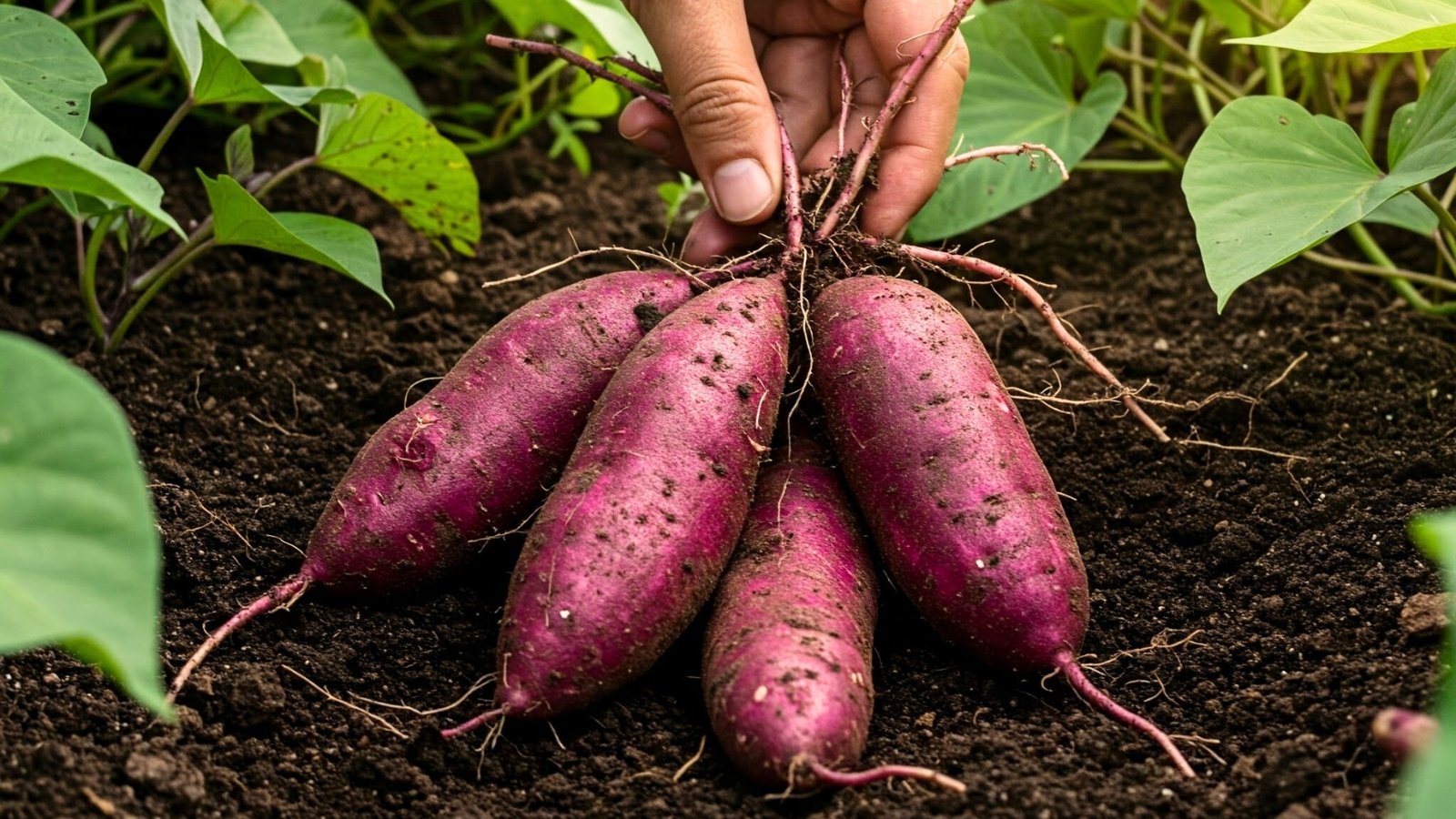
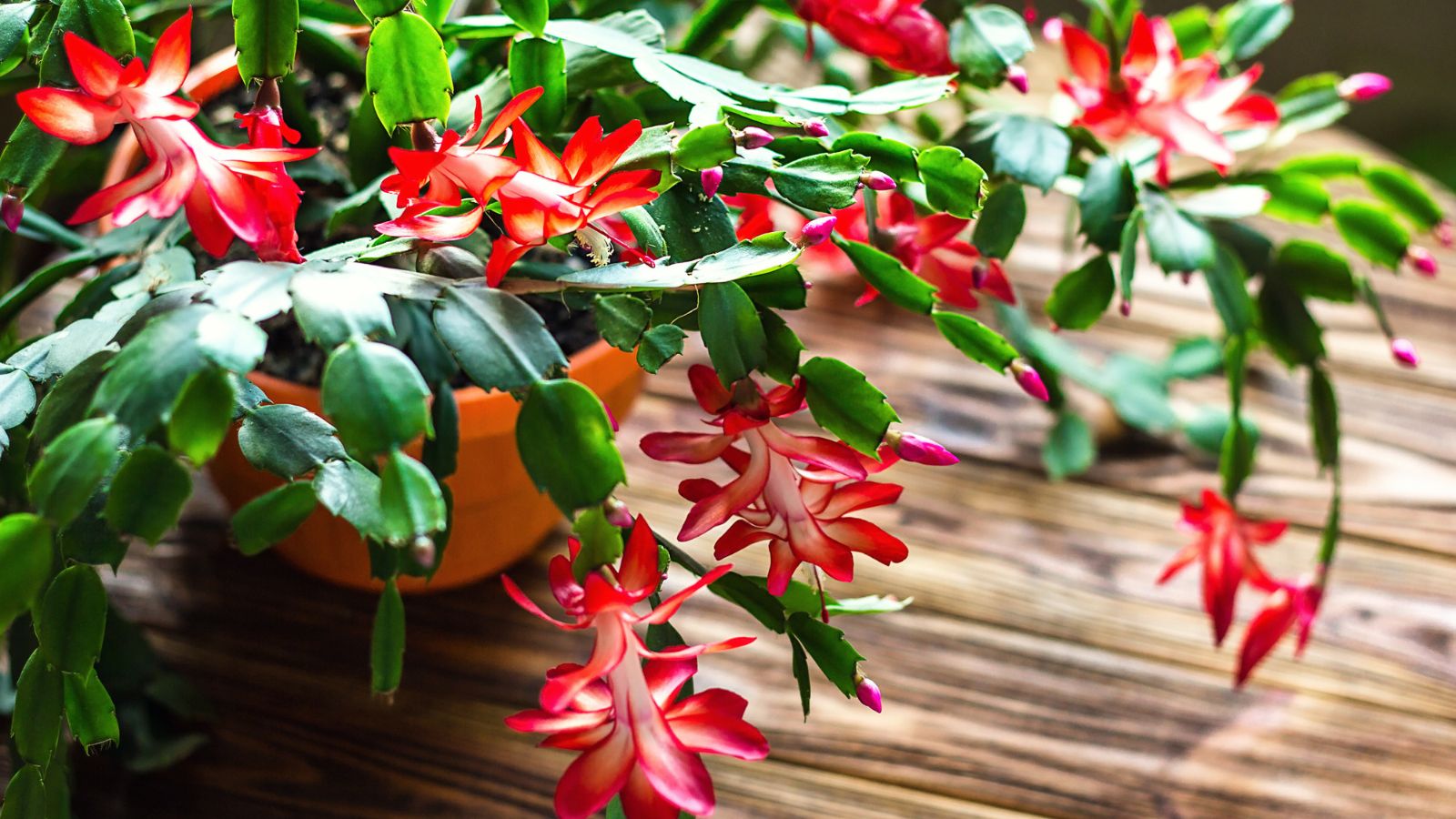

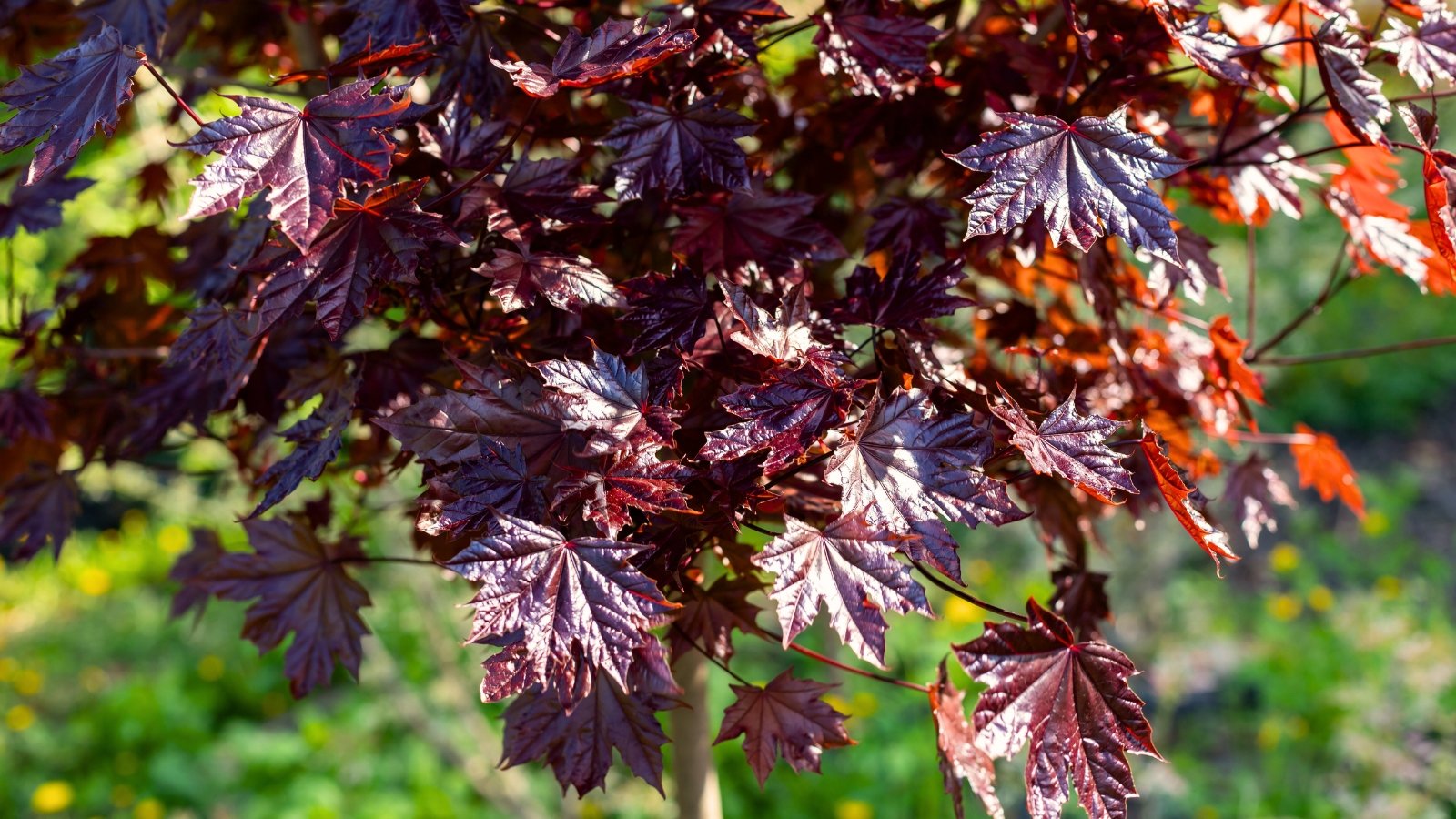

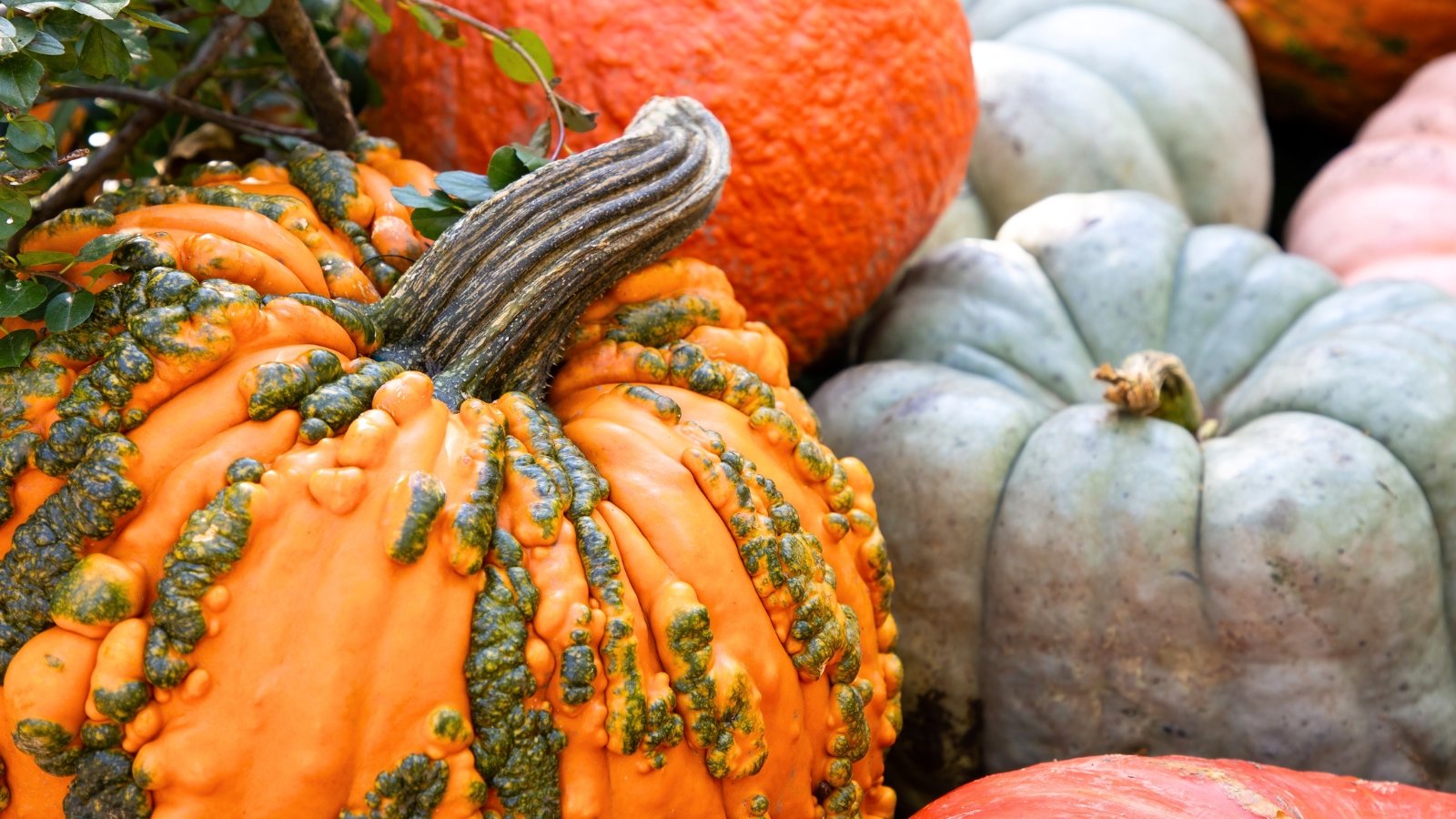
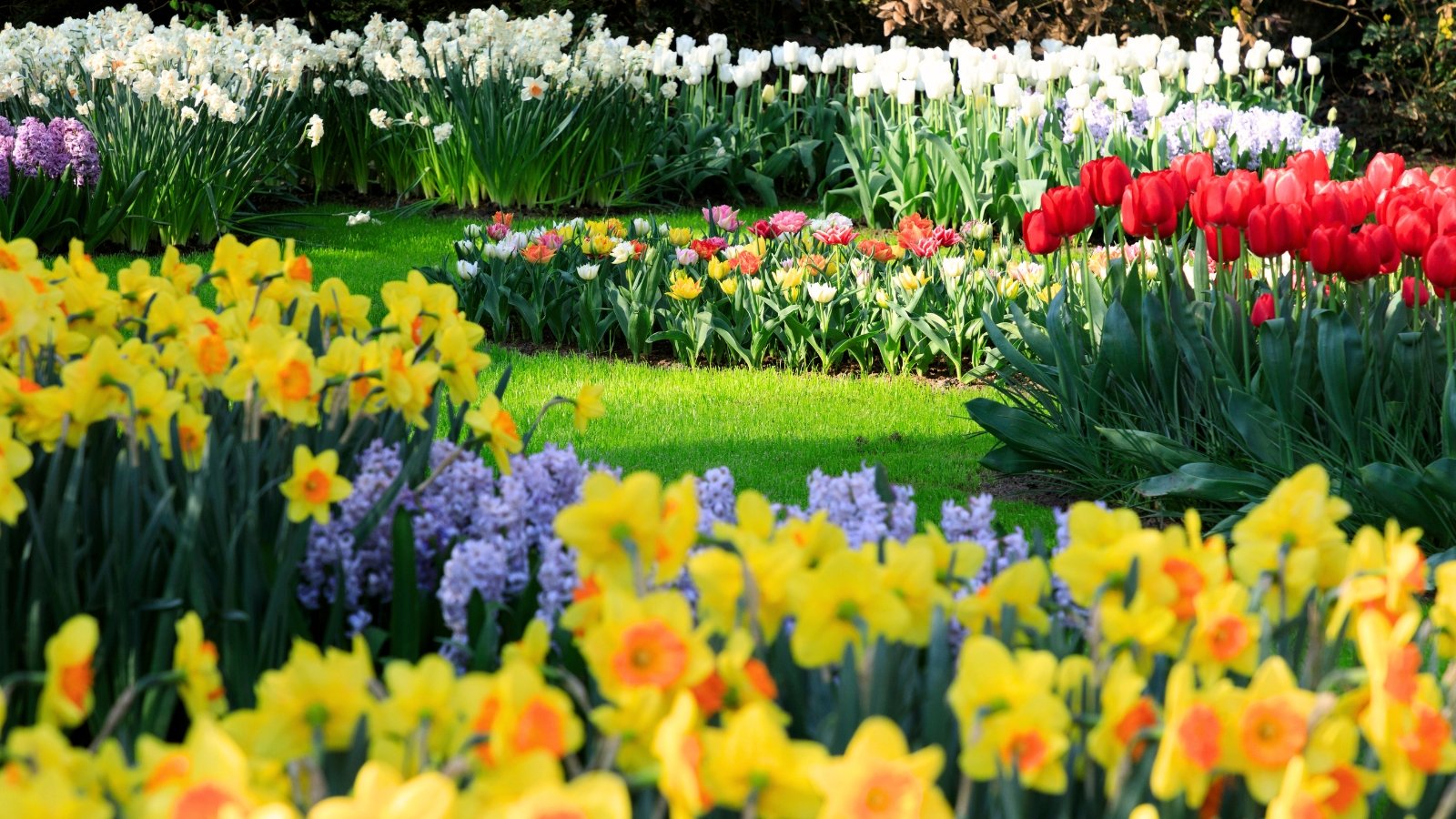














 English (US) ·
English (US) ·  French (CA) ·
French (CA) ·